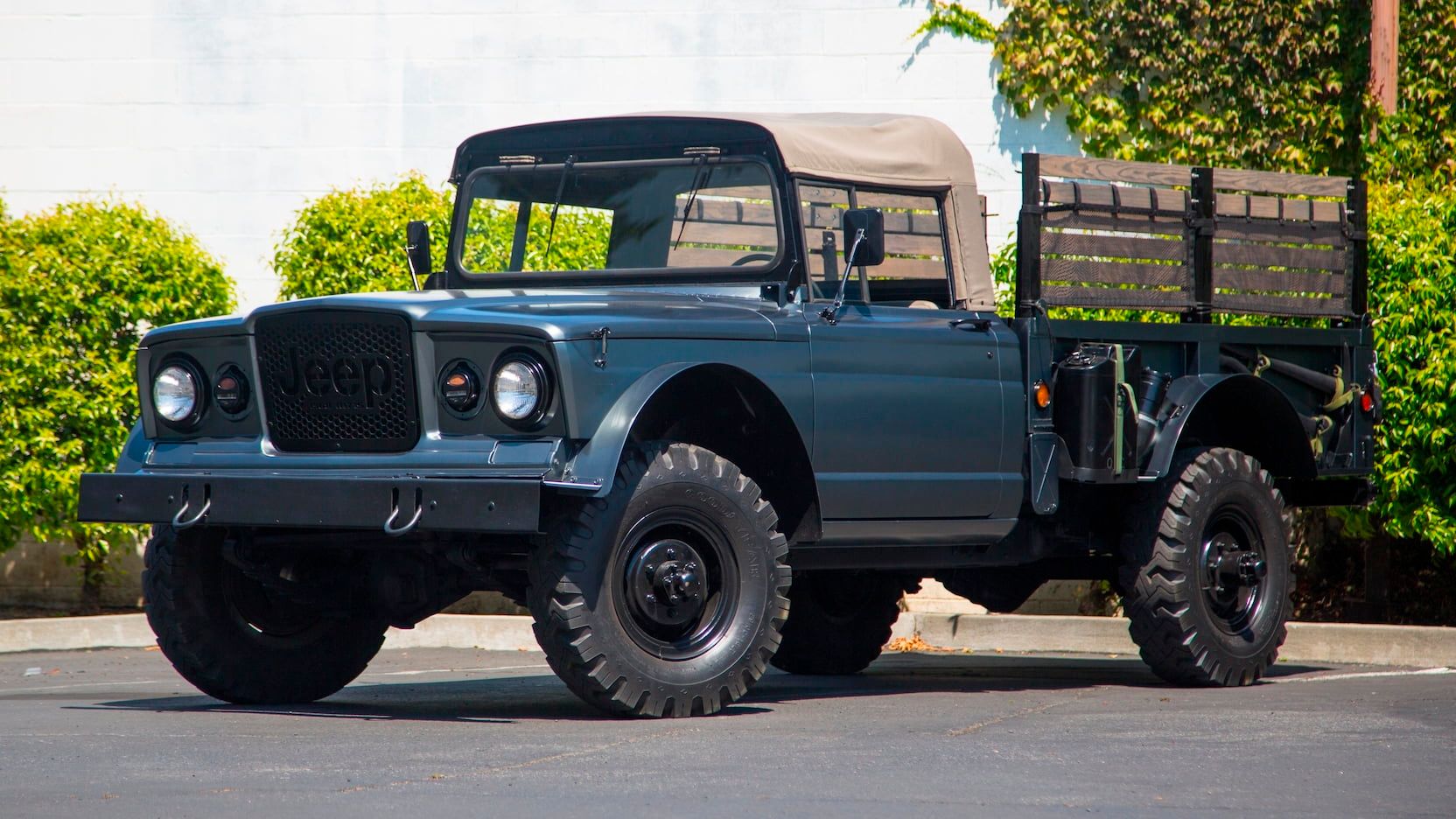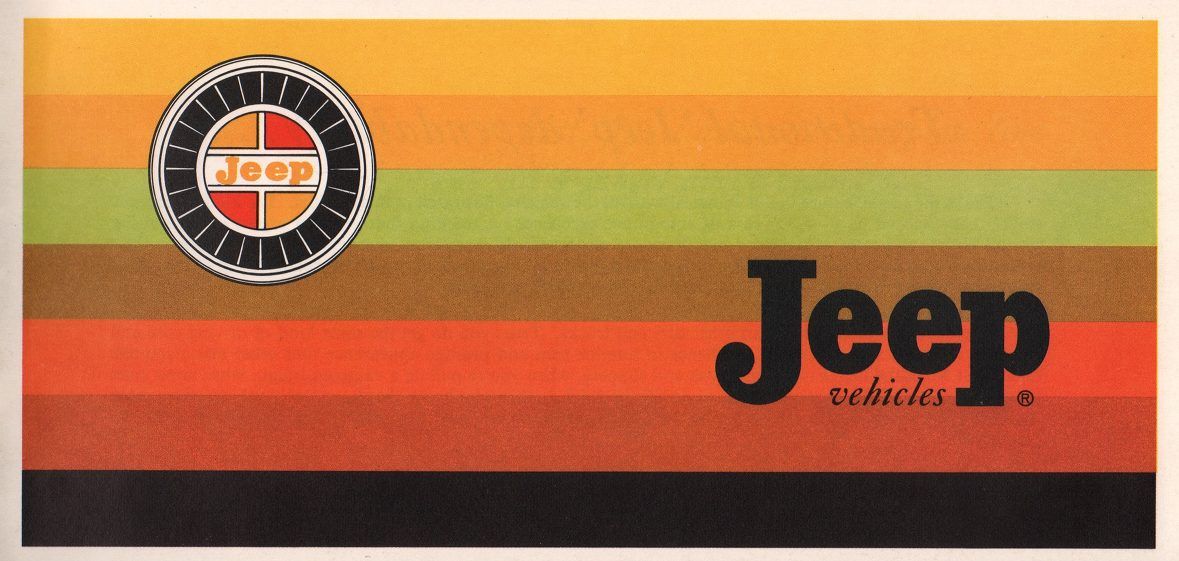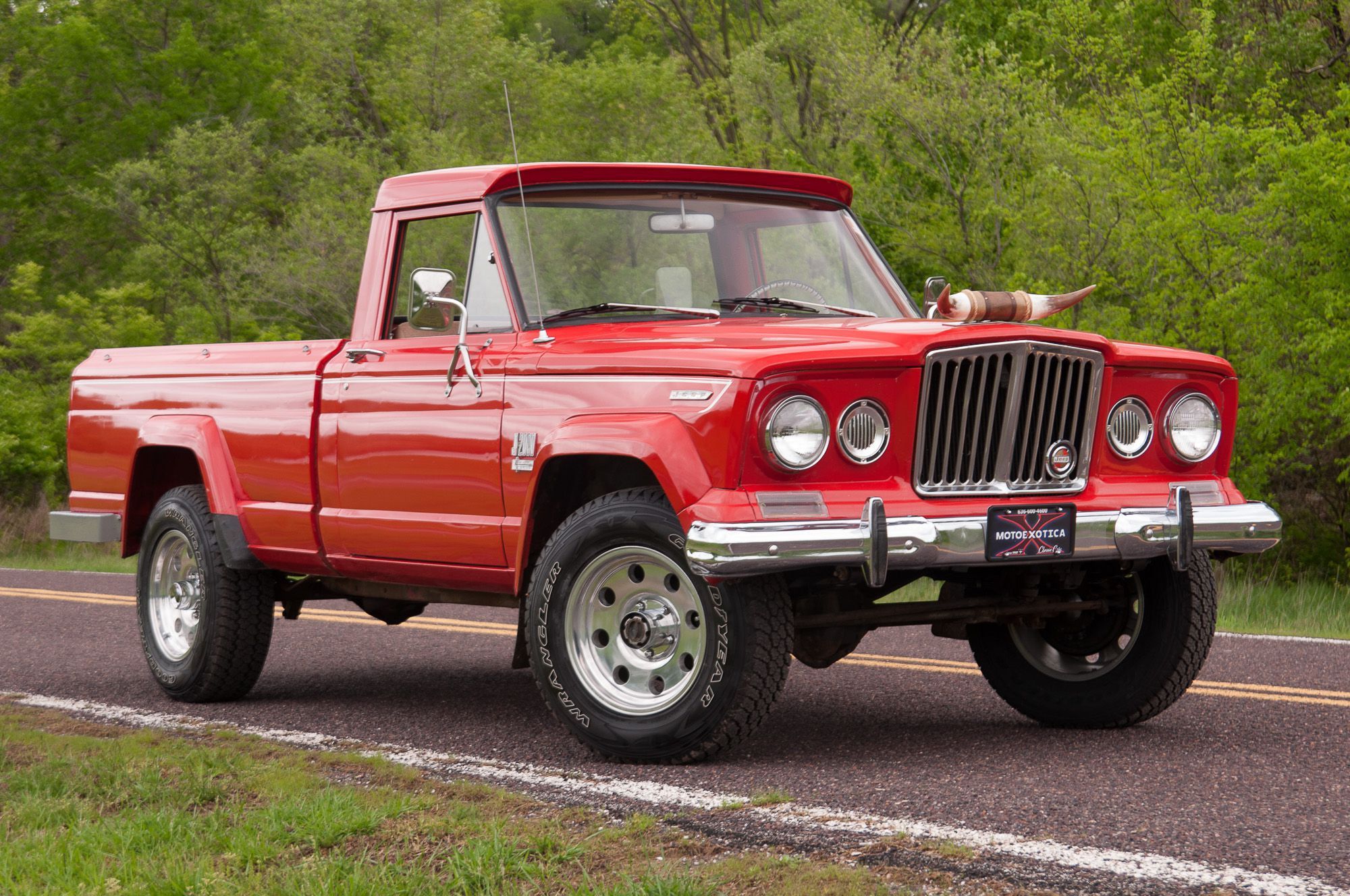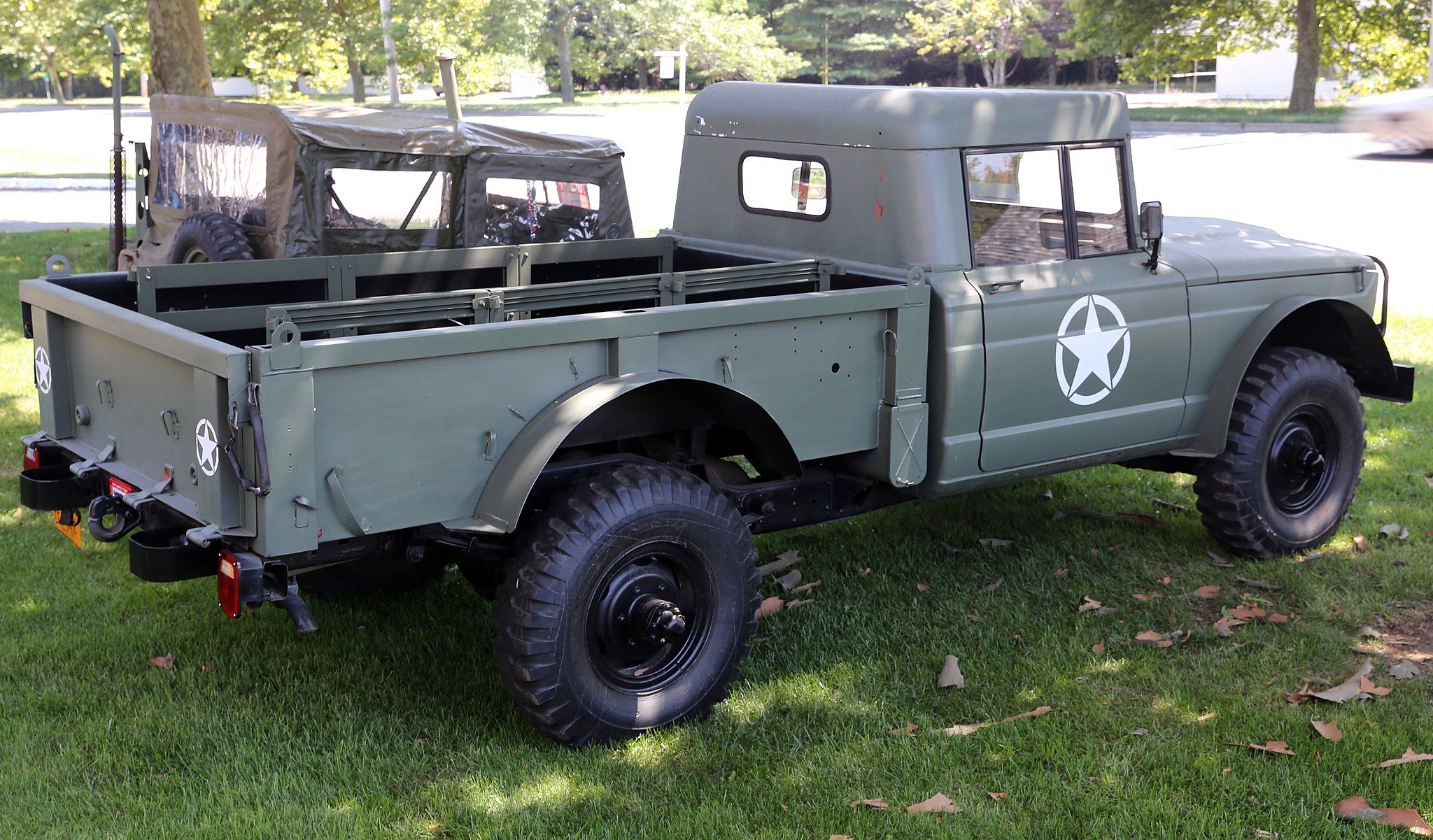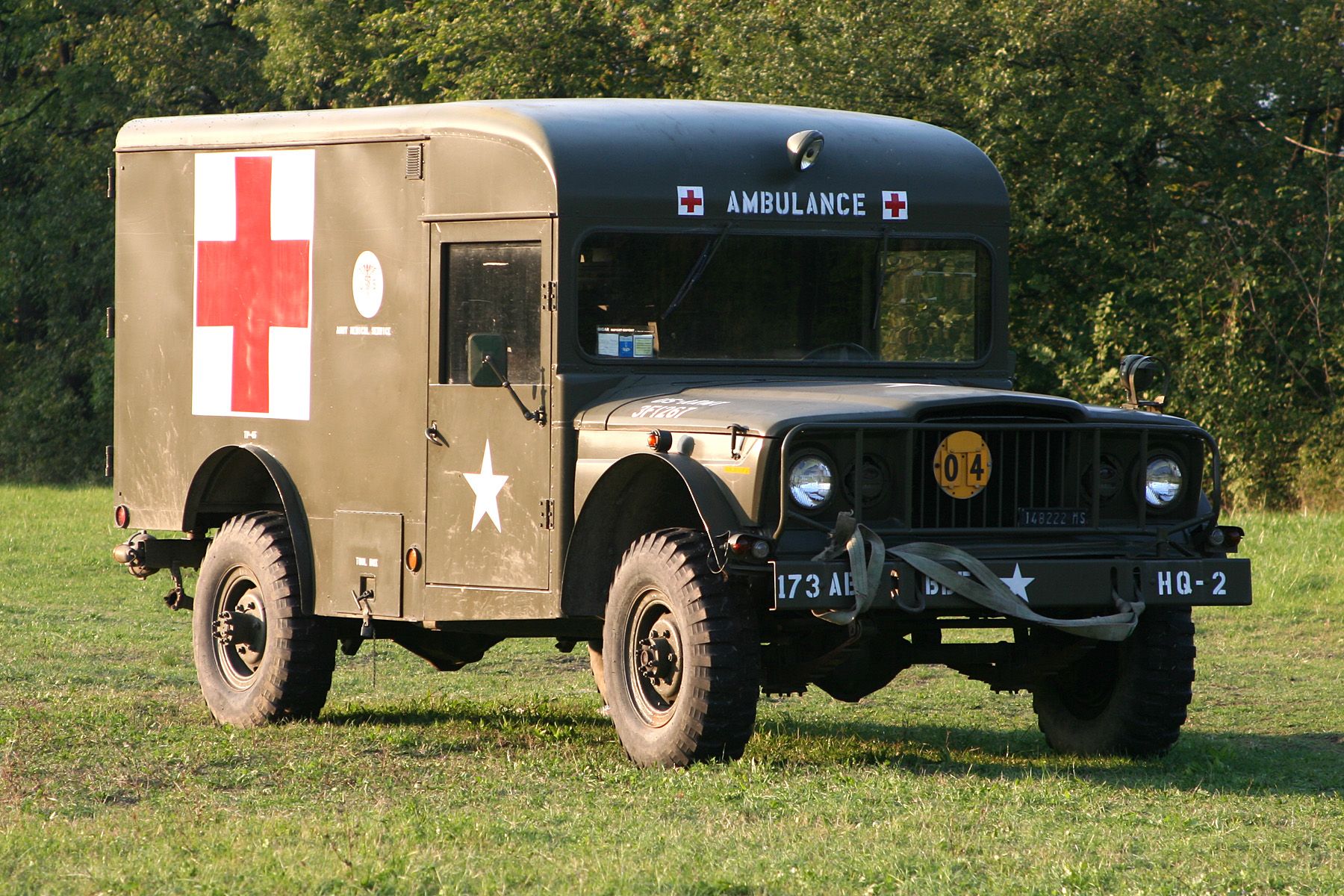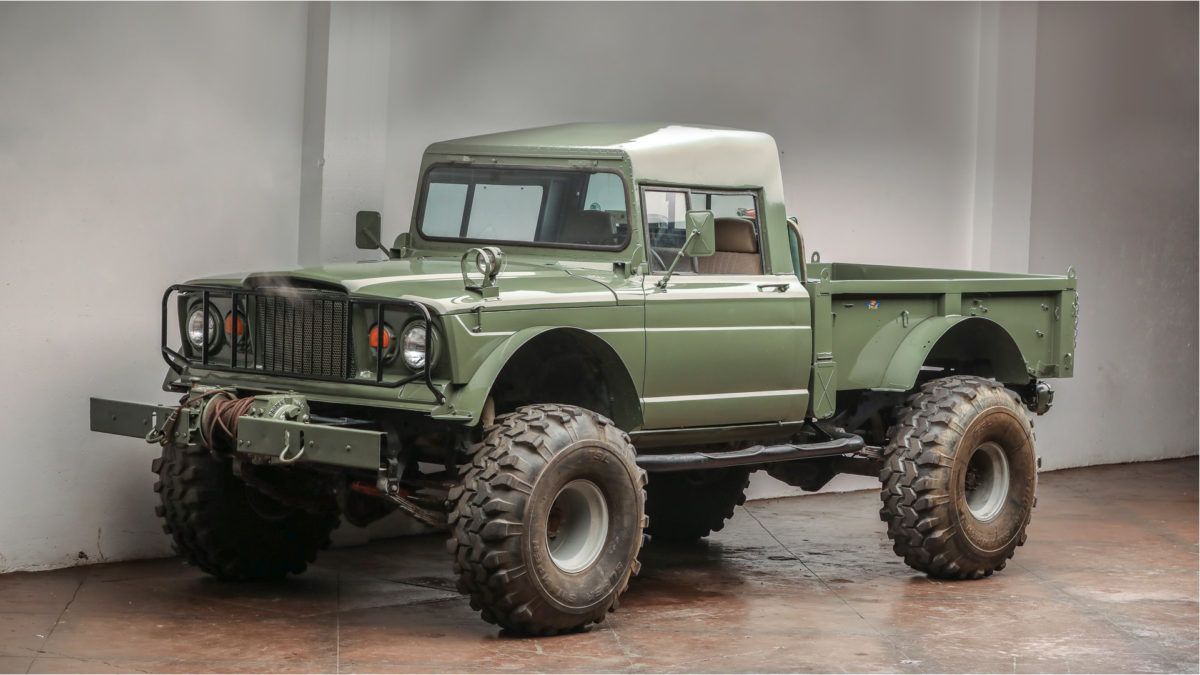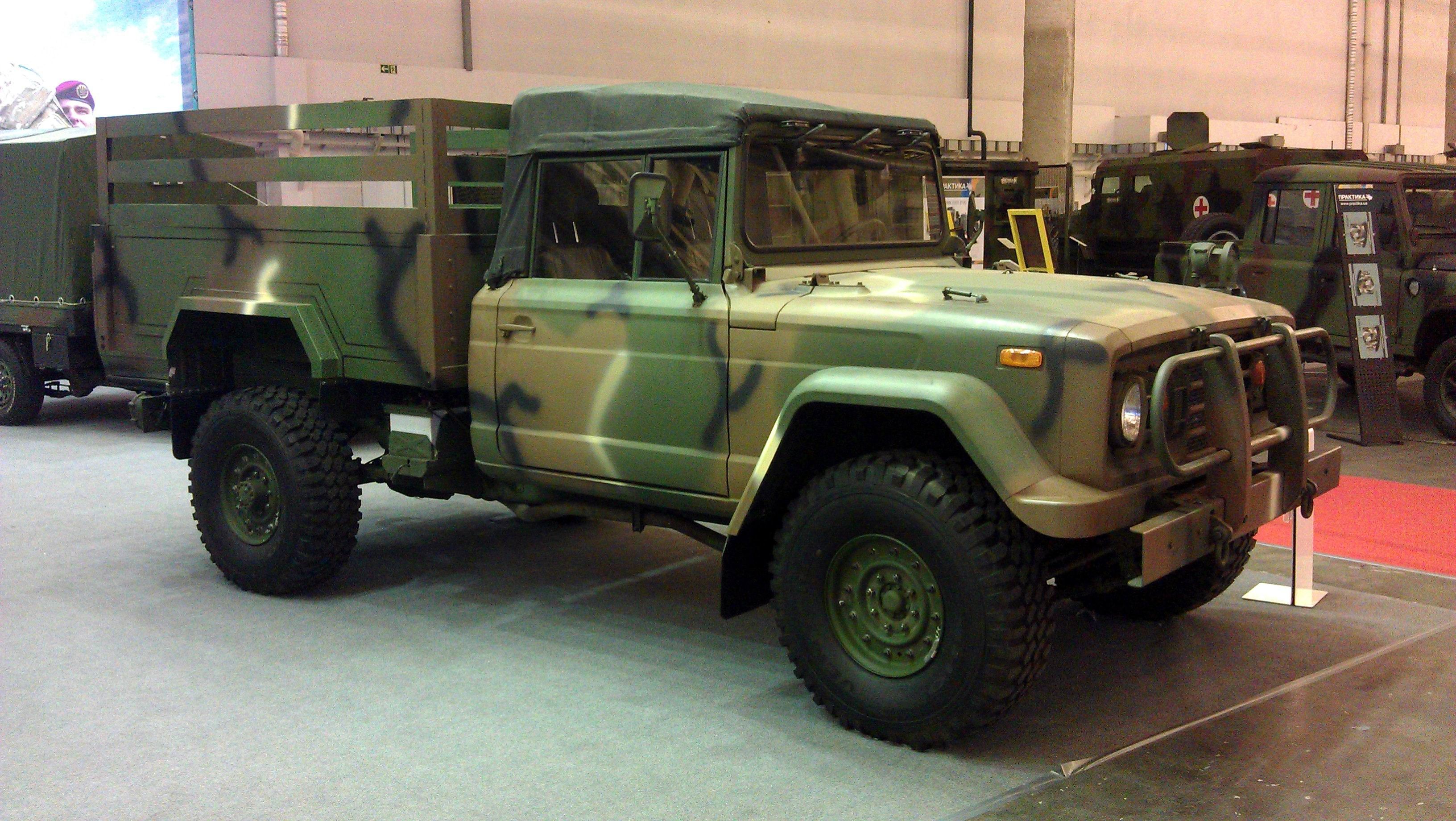With offroad capable vehicles surging the automotive market, whether their gas or battery-powered, more and more consumers are drawn to the idea of getting off the tarmac and onto the dirt. Throughout Jeep's entire legacy, they've dominated the market, with the Wrangler (first introduced in 1986) being a fan-favorite.
But Jeep also produced their share of vehicles for various war efforts. These were durable, powerful, strong, American vehicles to transfer cargo and soldiers across the roughest terrain. That was the purpose of the Kaiser Jeep M715, the go-to lightweight military truck of the Vietnam War.
A Brief History Of The Kaiser-Jeep Company
Jeep has become a household name, but Kaiser Jeep could be somewhat unfamiliar to the regular car consumer. The short answer is that Kaiser Jeep was a primary military vehicle supplier that also tried their hand at pedestrian cars. The long answer is that Kaiser Jeep is a hodge-podge conglomerate of the Kaiser Motor Company and Willys-Overland (the folks famous for Willys Jeeps).
The two merged together in 1953 but phased out pretty much every passenger car Willys and Kaiser produced by 1955, placing all their bets on the Jeep-based passenger trucks still being sold. Though they stuck with the name Willys Motors rather than include Kaiser or Jeep, and pumped out classics like the Gladiator in 1962 and the Wagoneer in 1963.
That same year, the company made the name switch to Kaiser-Jeep, reviving the Willys Jeepster and, of course, producing the M715 military truck. Though that merger only lasted 7 years before being bought by AMC and turned into the Jeep Corporation we know today.
The M715's Origins
The development of the M715 began in 1965, with the body and chassis heavily based on the recently introduced Willys Jeep Gladiator, but it didn't actually see service until 1967. It replaced the Dodge M37, which was a 14-year-old vehicle at the time and in desperate need of an update. Thus, the M715 took its place, debuting during the Vietnam war.
One of the reasons the M715 was such a hit at first is because it was a Commercial-Off-The-Shelf (COTS) vehicle, while the Dodge M37 was custom built. A COTS product is based on an already successful commercial product but tweaked to meet the needs of the buyer (the buyer being the US government, and the tweaks being converting the truck from a passenger car to a military transport vehicle). This made producing and purchasing the M715 significantly cheaper since they weren't reinventing the wheel.
Under The Hood And On The Chasis
Alright, we got the history out of the way, let's get down to the nitty-gritty. Because the M715 is the military equivalent of the Jeep Gladiator, the two share quite a few parts. The most important being the engine, which is relatively unchanged between the pedestrian and military versions of the truck.
Both cars use Jeep's very own Tornado engine, a 230 cubic inch (or approximately 3.7L) straight-six that produced around 132 horsepower. The key is that the Tornado engine utilized an overhead camshaft, which made the Tornado the only American engine to do so (at the time). This made for a heavy-duty engine with excellent fuel economy, one that could lug around the 28-gallon fuel tank that was feeding it.
Like many military vehicles, the M715 was also customizable and versatile. You could have it with a regular truck/transporter cab, or you could use the M725 ambulance cab or the M726 telephone maintenance (yes, they needed a whole truck to fix the telephones in the 60s). You could also get it with or without a front winch, though they were somewhat shoddy, and had a tendency to rip the driveshaft in half while being used.
That's where the M715 begins to fall apart. New technologies and unfinished equipment led some to believe the truck was unreliable. The military didn't quite know how to service these vehicles well, mainly because of the OHC. And on top of that, the Tornado engine burned lots of oil and sprung many leaks. And while that was a common problem at the time, it's an incredibly costly one during a war. Thus, the M715 was seen as a downgrade from the Dodge M37, which was simpler, known throughout the military, and proven to be reliable, and was only put in service from 1967 to 1969. Though that doesn't mean the M715 was good for nothing.
The M715 Today
In recent days, a very small group of Jeep enthusiasts are converting these vehicles into offroad beasts. The easiest and most common modifications you'll come across are fat, super swamper tires that'll tackle the mud with ease, but many restomodders and fanatics will toss in a new engine and transmission to turn their cult-classic Jeep into a true beast.
Though, oddly enough, there are still some M715's being made new... by Kia... in South Korea. While built under the name KM450, Kia bought the license to build the M715 decades ago. Kia calls it a tribute, albeit a far more successful tribute. One that sells across the globe, is far more reliable and modern, and still being produced to this day.
So Kaiser Jeep didn't have a terribly long run, but their legacy will live on through offroad monsters and South Korean knock-offs that ended up being better than the original... Maybe that's not the most glamorous legacy, but it's a legacy nonetheless.

